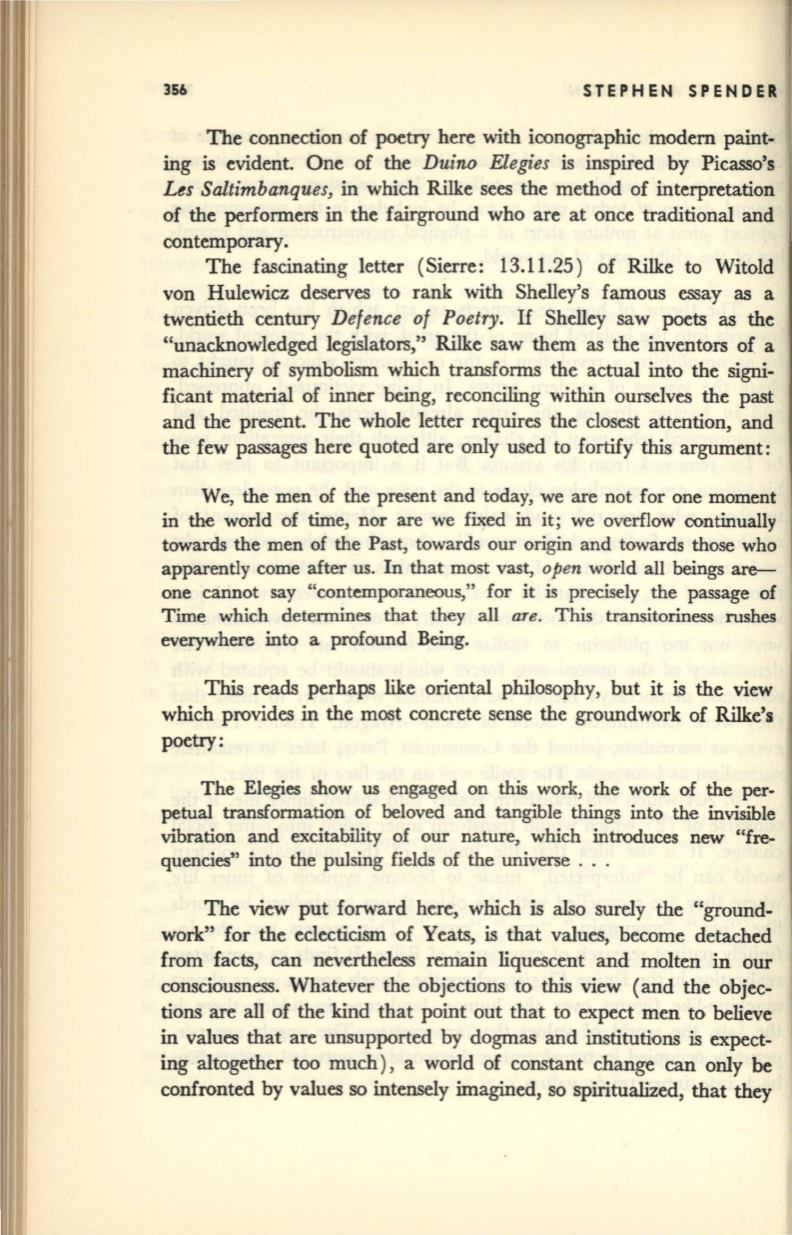
356
STEPHEN SPENDER
The connection of poetry here with iconographic modem paint–
ing is evident. One of the
Duino Elegies
is inspired by Picasso's
Les Saltimbanques,
in which Rilke sees the method of interpretation
of the performers in the fairground who are at once traditional and
contemporary.
The fascinating letter (Sierre: 13.11.25) of Rilke to Witold
von Hulewicz deserves to rank with Shelley'S famous essay as a
twentieth century
Defence of Poetry.
If
Shelley saw poets as the
"unacknowledged legislators," Rilke saw them as the inventors of a
machinery of symbolism which transforms the actual into the signi–
ficant material of inner being, reconciling within ourselves the past
and the present. The whole letter requires the closest attention, and
the few passages here quoted are only used to fortify this argument:
We, the men of the present and today, we are not for one moment
in the world of time, nor are we fixed in it; we overflow continually
towards the men of the Past, towards our origin and towards those who
apparently come after us. In that most vast,
open
world all beings are-–
one cannot say "contemporaneous," for it is precisely the passage of
Time which determines that they all
aTe.
This transitoriness rushes
everywhere into a profound Being.
This reads perhaps like oriental philosophy, but it is the view
which provides in the most concrete sense the groundwork of Rilke's
poetry:
The Elegies show us engaged on this work, the work of the
per–
petual transformation of beloved and tangible things into the invisible
vibration and excitability of our nature, which introduces new "fre–
quencies" into the pulsing fields of the universe ...
The view put forward here, which is also surely the "ground–
work" for the eclecticism of Yeats, is that values, become detached
from facts, can nevertheless remain liquescent and molten in our
consciousness. Whatever the objections to this view (and the objec–
tions are all of the kind that point out that to expect men to believe
in values that are unsupported by dogmas and institutions is expect–
ing altogether too much), a world of constant change can only
be
confronted by values so intensely imagined, so spiritualized, that they


